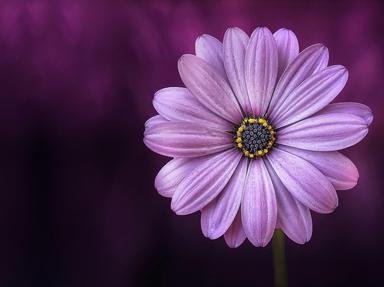Quiz Answer Key and Fun Facts
1. Deep in the heart of Texas you'll find roadsides capped with this low-growing annual herb. To some it's a noxious weed, but to Texans its their state flower!
2. Colors of flowers are relative, aren't they? Taken from the Neal Smith National Wildlife Refuge, Iowa, USA is this picture of Viola sororia, sometimes called the common ____ _____, a combination of two spectral colors.
3. What a lovely flower found in Los Alcornocales Natural Park, Cadiz Province, Andalusia, Spain. It gets its genus name from the Latin for a certain aquatic mammal. What animal is this bright blue flower named for?
4. Here is a charming wildflower Centaurea cyanus, commonly called cornflower, growing in a field near New Holland, North Lincolnshire, England. What is it's other name, for something worn?
5. What medicinal herb (Borago oficinalis) commonly cultivated for its seed oil is sometimes called the bee bush or bee bread because it is a favorite plant of bees?
6. Sharing the name of a gloriously blue parrot and a snobby lady from British television, what is this beautiful spring flower pictured here?
7. This shrub with delicate azure flowers and seed pods shaped like water vessels can provide a gardener with a litmus test of the soil. It will turn pink as the soil grows more alkaline. Known as hortensia in many languages, in English nowadays it is called what more frequently, especially in the USA?
8. Give a little thought and identify this somewhat large, pouffy garden flower, whose name comes from the French word for "thought" (and is sometimes used disparagingly for effeminate men).
9. Here's another flower whose common name can be guessed by its color and shape. A wildflower with many domestic varieties and hybrids, what is this sonorously beautiful sapphire blossom?
10. You will likely never find this blue flower growing in your garden, but you may find a blue-colored version of this most popular flower in a florist's shop. What is this elusive blossom, which by any other name would smell as sweet?
Source: Author
gracious1
This quiz was reviewed by FunTrivia editor
WesleyCrusher before going online.
Any errors found in FunTrivia content are routinely corrected through our feedback system.
